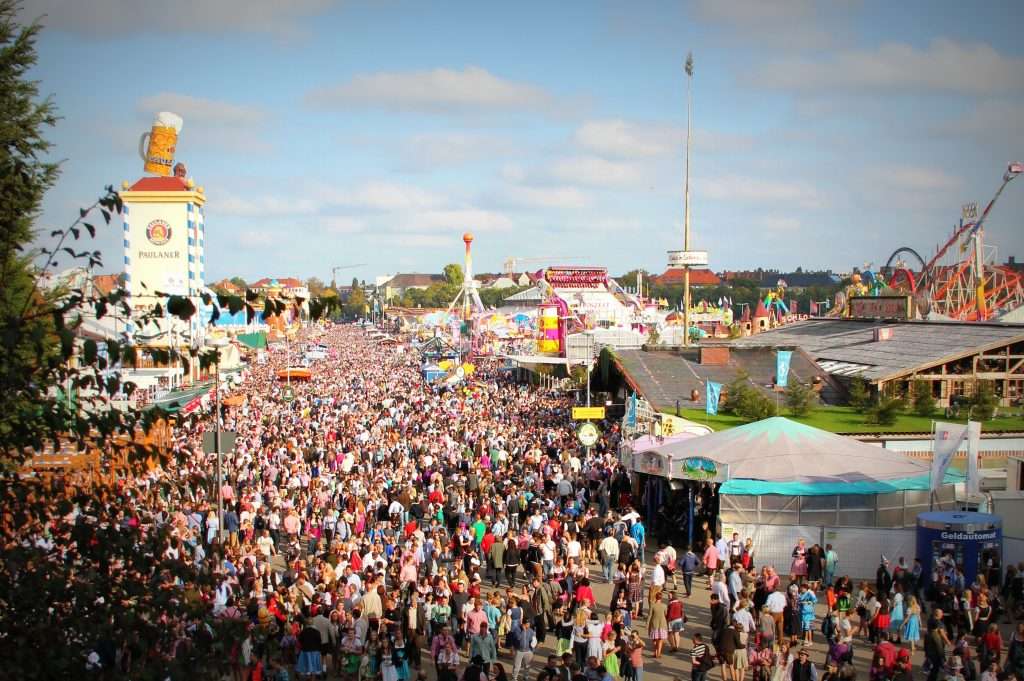Oktoberfest in Munich: What You Need to Know

It’s in September, not October
Is this common knowledge by now? I feel like it should be, but just in case, Oktoberfest is a three-week affair, starting mid-September, generally ending on the first Sunday of October.
Oktoberfest started as a celebration of the wedding between King Ludwig and Princess Therese of Saxe-Hildburghausen on October 12, 1810. It has been a tradition and almost every year since.
Where exactly is Oktoberfest?
Generally speaking, most people associate Oktoberfest with Munich, Germany. This is the first, the OG, where it all started. More specifically, Oktoberfest is held on the Theresienwiese fairgrounds (named after princess Therese), colloquially called the Wiesn.
What time of week/day should I go to the tents?
Every day is going to be packed. Fridays and Saturdays are going to be insanely crowded, but also potentially the most fun. So if getting absolutely hammered is your thing, then go then. During the weekday is generally tamer, but by no means dull.
Early to mid-afternoon has worked well for me. Get there too soon, you’ll burn out. Get there too late, and you’re going to be throwing elbows to get a table. Expect it to be an all-day affair, let’s say 1pm – 11pm.
Beer is only served in liters and referred to as maß (German for liter).
Yes, you read that correctly. At Oktoberfest, the only size of beer you can order is a liter. And if this sounds like a lot of beer, it is. And it gets expensive, too. Each maß is going to set you back at least $12, which might not sound like a ton, but after about 4-5 per day, your wallet will feel pretty light. Because of this, each year, the price of beer at Oktoberfest a contentious conversation between Bavarians.
There are other things to drink aside from beer.
Yes, Oktoberfest is about beer. But if crushing liters of beer in one sitting is just a bit too much, there are some other options. The main one being a radler, half beer, and half lemonade. Served in the same liter sizes as beer, the radler gives you a bit of a reprieve.
There’s also a wine tent! Though, I don’t know much about the wine tent to be entirely honest. I imagine it’s less fun. There’s even a champagne kiosk where you can get different champagne/prosecco and sparkling cocktails.
What do you eat at Oktoberfest?
When you’re getting day drunk on liters of beer, you will get the urge to stuff your face full of meat. Fortunately, the Germans are happy to oblige. In the tents, you can get any number of staples like pork knuckle, schnitzel, pretzels, etc. It might take a bit longer, and it will cost you.
Outside the tents, the Wiesn is full of stands serving all kinds of unholy snacks. King of which, is the kasekrainer. This menacing creation is a pork sausage filled with Emmenthaler cheese, exploding in your mouth with every bite. Just get one, you won’t regret it. Unfortunately, though, you can’t bring any of this into the tents. So if you want to find cheaper grub outside, you’ll either have to take turns leaving or give up your table and move to a new tent.
Lederhosen are a big deal.
If you’ve ever had a nightmare involving some yodeling individual wearing leather pants, maybe you shouldn’t go to Oktoberfest. About 99% of the men here will wear lederhosen, so if you don’t, you’ll feel left out. Also, lederhosen is a big deal in Bavaria. Made of real deer hide, lederhosen is serious business. Sure, you can get a cheap pair on Amazon for $30, but where/s the fun in that? Though I would highly recommend getting them before you go, otherwise you’re looking at $350 for a quality pair while you’re there.
The female equivalent of lederhosen is called a dirndl.
On that note, the female equivalent of lederhosen is called a dirndl. Just as ubiquitous during Oktoberfest, so ladies, please get a dirndl. Also, you’re current, or future significant other will undoubtedly thank you for it. It is a bit less intense than lederhosen. Since there generally isn’t much leather involved, the price tags aren’t quite as severe.
Tracht is the general term for traditional German garb.
There’s are a lot more to it than lederhosen and dirndls. The word tracht is the collective term for traditional garments, like lederhosen and dirndls, but also coats, hats, shoes, vests, socks, etc. And to be honest, it all looks pretty damn classy. The style changes too; some years suspenders are in, others vests. It should not really make a difference to you if you’re going as a tourist, that type of nuance is left to for the Bavarians.
To make Oktoberfest a bit more real, check out a story about my latest trip to Munich.
